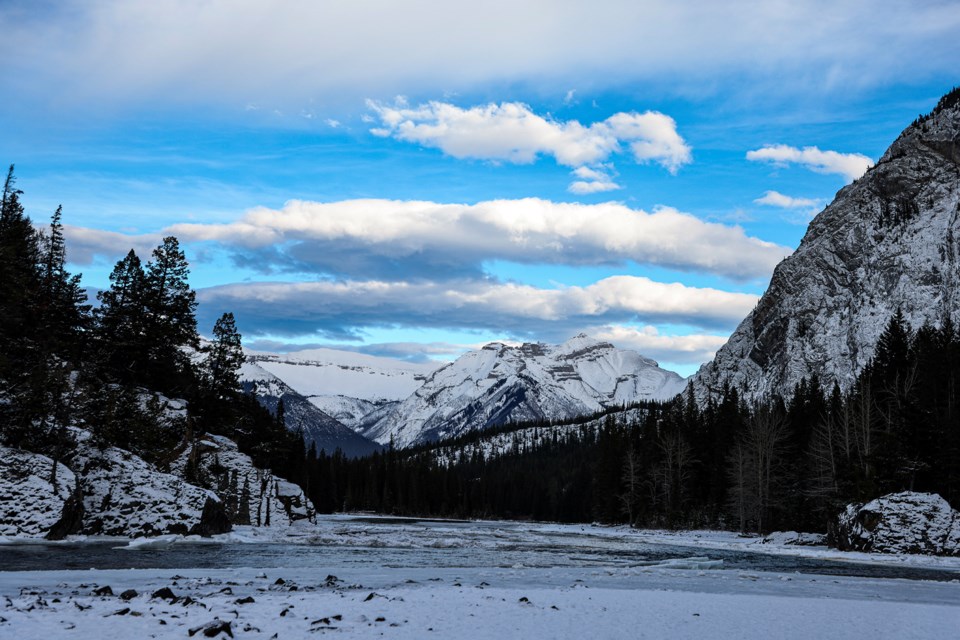Banff experienced the second driest January in 136 years of records, with Environment and Climate Change Canada officials saying the same warm, dry trend in December continued into January, with only 2.3 millimetres of precipitation compared to the normal for the month of 18.8 mm.
Meteorologist Alysa Pederson said the data, which goes back to 1889, shows the driest January was in 1985 when there was just 0.6 mm of precipitation.
“January was very, very dry,” said Pederson. “It comes in as the second driest on record for Banff.”
Pederson said most of the 2.3 mm fell as snow, but there are different variants of snow containing different moisture levels.
“You can have your wet, sticky snow, and there’s usually more moisture than your dry, fluffy snow,” she said.
“We look at it mostly when it just comes to millimetres equivalent of liquid if you were to melt the snow, and that’s what we get as 2.3 mm for Banff.”
Pederson said snow pillows – a device that measures the water equivalent of the snowpack – show the same dry trend across the Rockies.
“When we look at, say, Sunshine Village, they’re below the 25th percentile for what they’re supposed to have,” she said, noting that area has recorded 250 mm of water equivalent so far this winter.
“That’s about on track to where they were last year as well, which we know last year was a very dry, dry season.”
Pederson said a snow pillow site at Skoki shows 125 mm of water equivalent, which is below last year’s amount.
“The general story across the Rockies is that the snowpack is lower than normal this year, for sure,” she said.
Pederson said the wettest months of the year are still to come, pointing to May, which typically gets about 50 mm, and June, which is by far the wettest month typically getting 73.3 mm of precipitation.
“Usually in Alberta it’s our May and June that are the biggest and that does fall in a lot of cases as rain,” she said.
“Of course, in the higher elevations of the Rockies, we can still get snow right into June and July.”
As for temperatures, January was a bit warmer than typical in Banff.
Pederson said the normal mean temperature for Banff is -8.5 Celsius, whereas this January was -7.5 C.
“A bit unseasonably warm, but not crazy,” she said. “It puts it at about the 43 warmest in Banff.”
According to the statistics, there were nine days in January that were above zero, with four of those coming Jan. 28-31 before the temperatures plummeted into the -20s.
Pederson said the warmest day was Jan 16 when the daytime high hit 5 C.
“More notable is there were actually only six days below - 5 C and your normal daytime high temperature is about -3 for this time of year.”
The month of December was the third warmest on record, with Banff’s mean monthly temperature for December 2024 at -9.2 C, whereas December 2023 was -4 C.
According to the Environment and Climate Change data, Banff saw 37.2 mm of precipitation in December compared to the average for that month of 33.2 mm.



